Ever noticed how some skincare products just don’t stick? You try every cream and serum, but your skin still feels off—dry, dull, or irritated. What if the answer has been right under your nose, literally? Nature’s animal-derived ingredients are changing the game in skin care. They’re not just a trend; they’re proven to work.
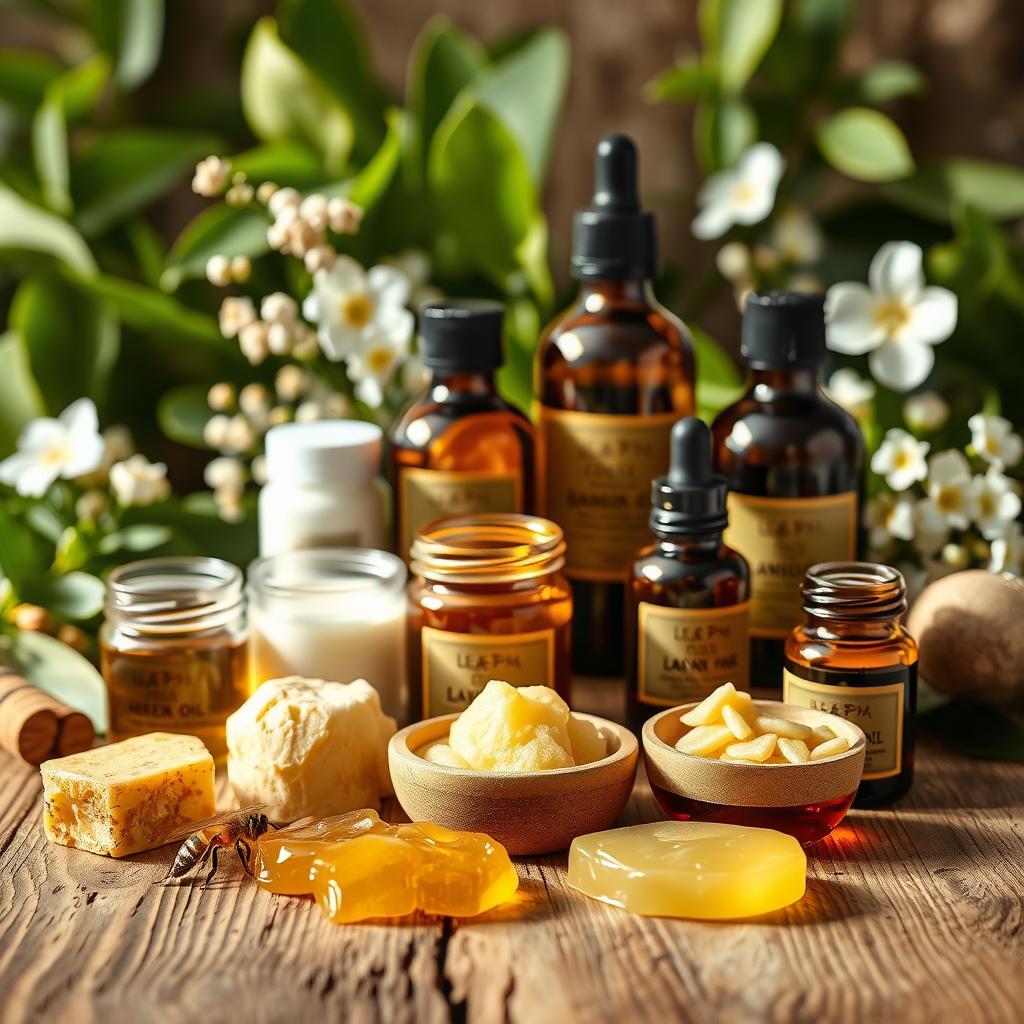
Key Takeaways
- Animal-derived ingredients offer unique benefits like hydration and repair unmatched by many synthetics.
- Historically, cultures worldwide have used these ingredients for centuries, now backed by modern science.
- Popular options like honey, lanolin, and snail mucin target issues from acne to aging.
- Learning how to incorporate them safely can boost your routine’s effectiveness.
- Ethical sourcing matters—this guide highlights brands and practices that prioritize sustainability.
The Renaissance of Animal-Derived Skincare
Animal-based skincare products are back in style, combining old wisdom with new science. For ages, people around the world have used animal products to improve their skin. Think of Cleopatra’s famous milk baths or traditional Chinese pearl powder treatments. These show that these ingredients are more than just trends—they’re proven solutions.
Historical Use of Animal Ingredients in Beauty Routines
Cultures from Egypt to Japan have always used nature’s gifts. Milk baths and silk proteins were key in royal beauty routines. Even a 3rd-century Chinese text praised pearl extracts for their ability to make skin glow. As skincare historian Dr. Emily Chen says:
“Animal ingredients were humanity’s first luxury skincare.”
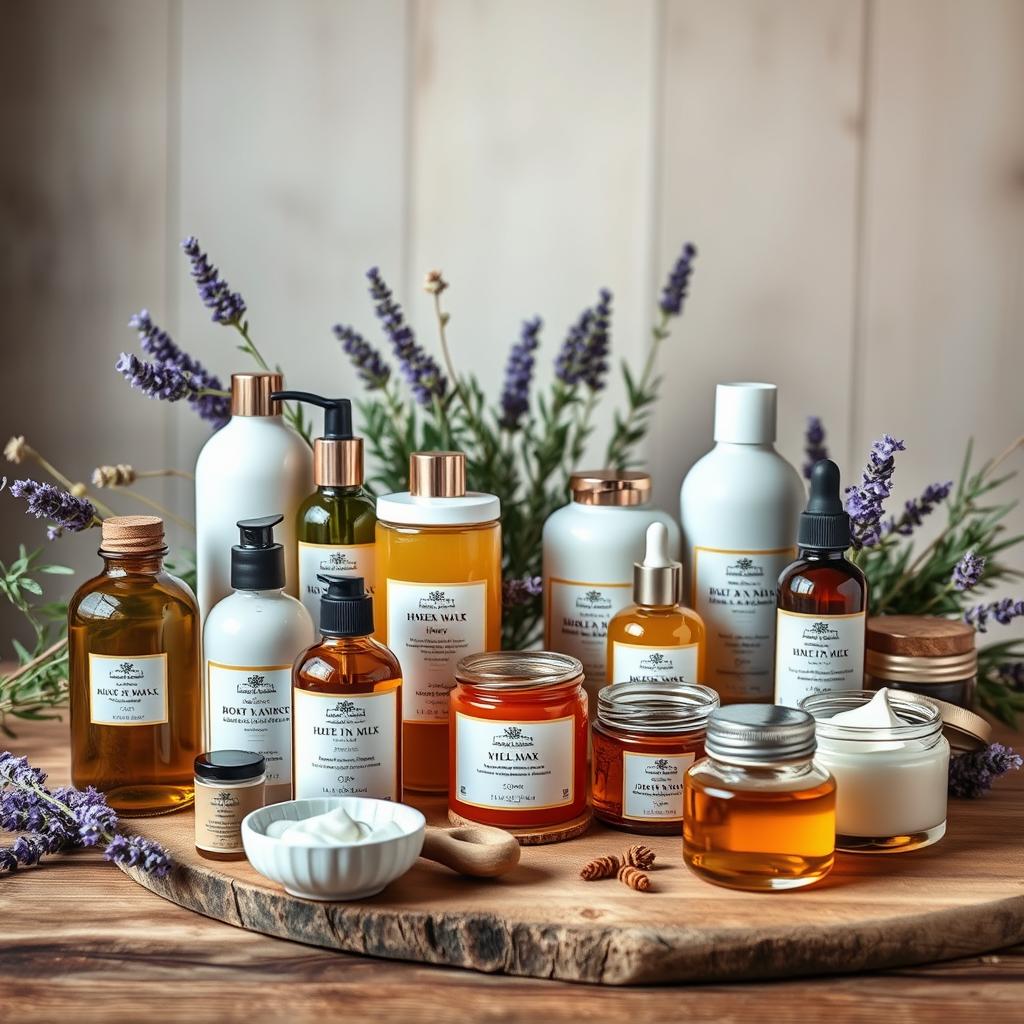
The Scientific Backing of Animal-Based Extracts
Today’s labs confirm what our ancestors knew. Here’s why these ingredients work:
- Hyaluronic acid from roe deer helps keep skin hydrated, holding 1,000x its weight in water.
- Beeswax creates protective barriers, as a 2022 study in dermatology found.
- Collagen peptides from fish improve skin elasticity, as clinical trials show.
These studies support the benefits of using animal-derived ingredients in skincare with real results.
Modern Applications in Premium Skincare Lines
Top brands like La Mer and Kiehl’s now offer animal-based skincare products in their high-end lines. La Mer’s iconic Cream uses fish collagen fermentation, while Kiehl’s Milk & Honey Stick combines old ingredients with new textures. These brands show that old wisdom and new science can work together, offering results that synthetic products can’t match.
Understanding the Incorporation of Animal-Derived Ingredients for Skin Care
Ever wonder why some animal-based products work so well? It’s because of their unique molecular makeup. This makeup matches your skin’s lipid layers, making them great for hydration and barrier repair. For example, collagen is a protein your body makes, so animal-sourced collagen fits your skin’s needs perfectly.
Animal extracts in skincare come in three types: extracts, derivatives, and whole ingredients. Each type works differently. For example, snail mucin, a derivative, breaks into smaller molecules that penetrate deeper than plant-based humectants.
- Extracts: Concentrated compounds (e.g., bee venom for peptides)
- Derivatives: Processed forms (e.g., marine collagen peptides)
- Whole ingredients: Unprocessed sources (e.g., goat milk)
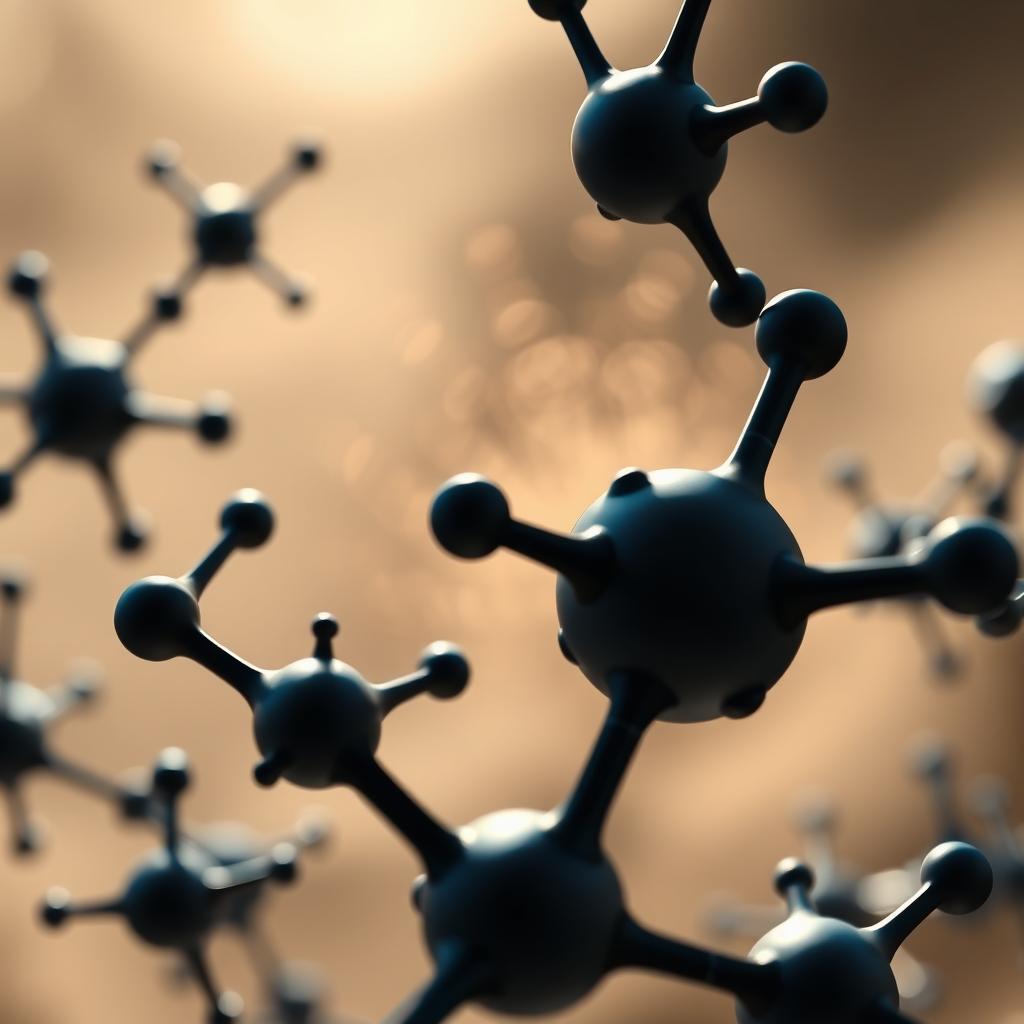
These ingredients boost collagen synthesis and speed up cell turnover. Their structure matches your skin’s biology. Bioavailability is key—ingredients like royal jelly penetrate better than synthetics, delivering nutrients directly to your epidermis. This makes them effective for anti-aging and wound healing.
Next time you read a label, look for terms like “milk protein” or “marine lipids. These ingredients don’t just sit on the skin’s surface—they work with your body’s processes. Understanding this science helps you choose products that deliver real results without guesswork.
Honey and Bee Products: Nature’s Golden Elixir
Bees give us some of nature’s best skincare treasures. From their hives to our skincare, honey and bee products are backed by science. They’re part of the trend in natural skincare with animal ingredients, mixing old traditions with new science.
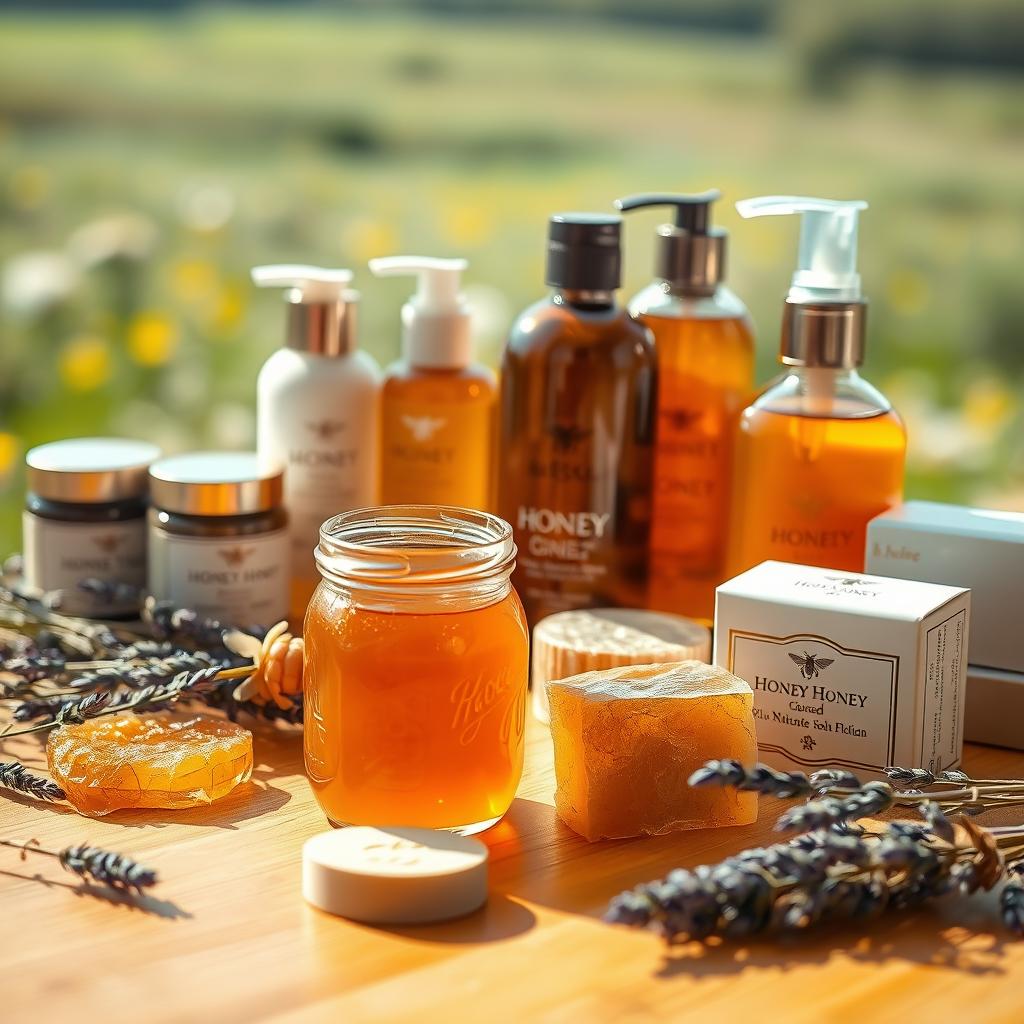
Raw honey is more than just sticky—it’s a powerhouse. It pulls moisture into your skin like a sponge. Unlike fake stuff, it keeps moisture in without clogging pores. Choose raw, unprocessed honey to keep its good stuff. Brands like Apivita use it in face masks for a glow.
Raw Honey as a Natural Humectant
- Moisturizes without greasiness
- Enzymes gently exfoliate dead skin cells
- Suitable for all skin types, especially dry or dull skin
Propolis for Antimicrobial Protection
This resin from the hive fights breakouts. Its antibacterial properties act like a shield against acne-causing bacteria. Add a bit of propolis extract to your moisturizer to treat blemishes. Studies show it fights inflammation faster than some OTC creams.
Royal Jelly’s Anti-Aging Properties
“Royal jelly’s 10-HDA compounds boost collagen production by up to 20%,” says a 2022 dermatology review.
This nutrient-rich secretion from nurse bees tackles wrinkles and sun damage. Serums with 0.5–1% royal jelly make skin look smoother in 4–6 weeks. Brands like The Body Shop add it to anti-aging creams for a smoother feel.
Lanolin: The Sheep-Derived Moisture Barrier
Lanolin is a natural wax from sheep’s wool. It has been used in animal-derived ingredients in skincare for centuries. Unlike petroleum products, lanolin mixes with your skin’s oils.
Its structure is similar to human sebum. This makes a breathable barrier that keeps moisture in. It’s great for dry skin, holding up to 400% of its weight in water. It’s perfect for chapped lips, cracked heels, or eczema.
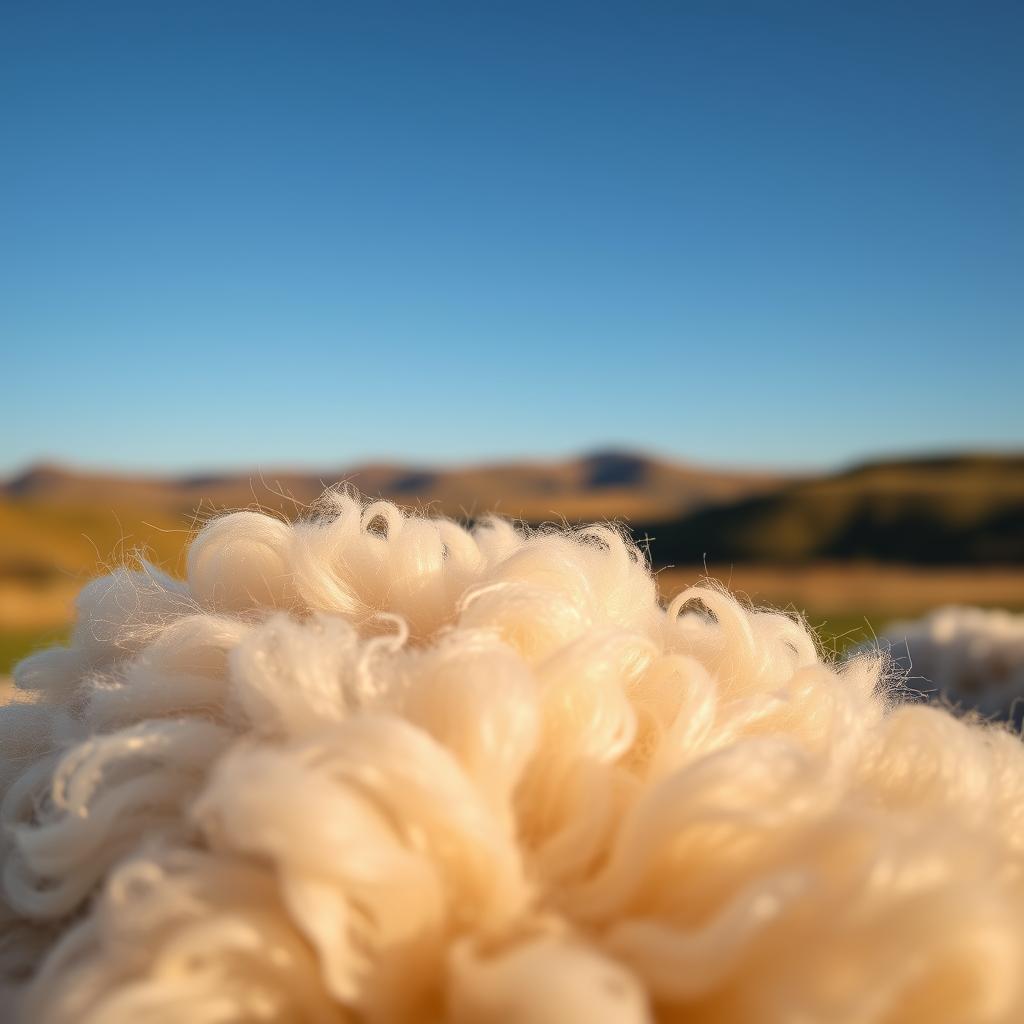
“Lanolin’s lipid structure makes it uniquely compatible with human skin, reducing the risk of clogged pores compared to synthetic alternatives.”
Purified lanolin is cleaned gently to remove impurities. This makes it safe for even sensitive skin. Allergies are rare because it’s a natural byproduct of shearing, not from live animals.
Here’s how to pick the right type:
| Derivative | Type | Best For |
|---|---|---|
| Lanolin | Raw, unprocessed | Moisturizing rough hands and feet |
| Lanolin Alcohol | Emulsified | Hydrating face creams |
| Acetylated Lanolin | Modified for sensitivity | Barrier repair in eczema or post-shaving |
Nursing mothers can use lanolin-based nipple creams. They protect without blocking pores. Overnight masks with lanolin help your skin while you sleep. Look for “purified” products for safety and purity.
Snail Mucin: The Unexpected Skincare Superstar
Snail mucin is a big hit in animal-based skincare products. It comes from snail secretions and is loved for its healing powers. Korean beauty traditions and science support its use. Plus, it’s made without harming snails, thanks to ethical production methods.
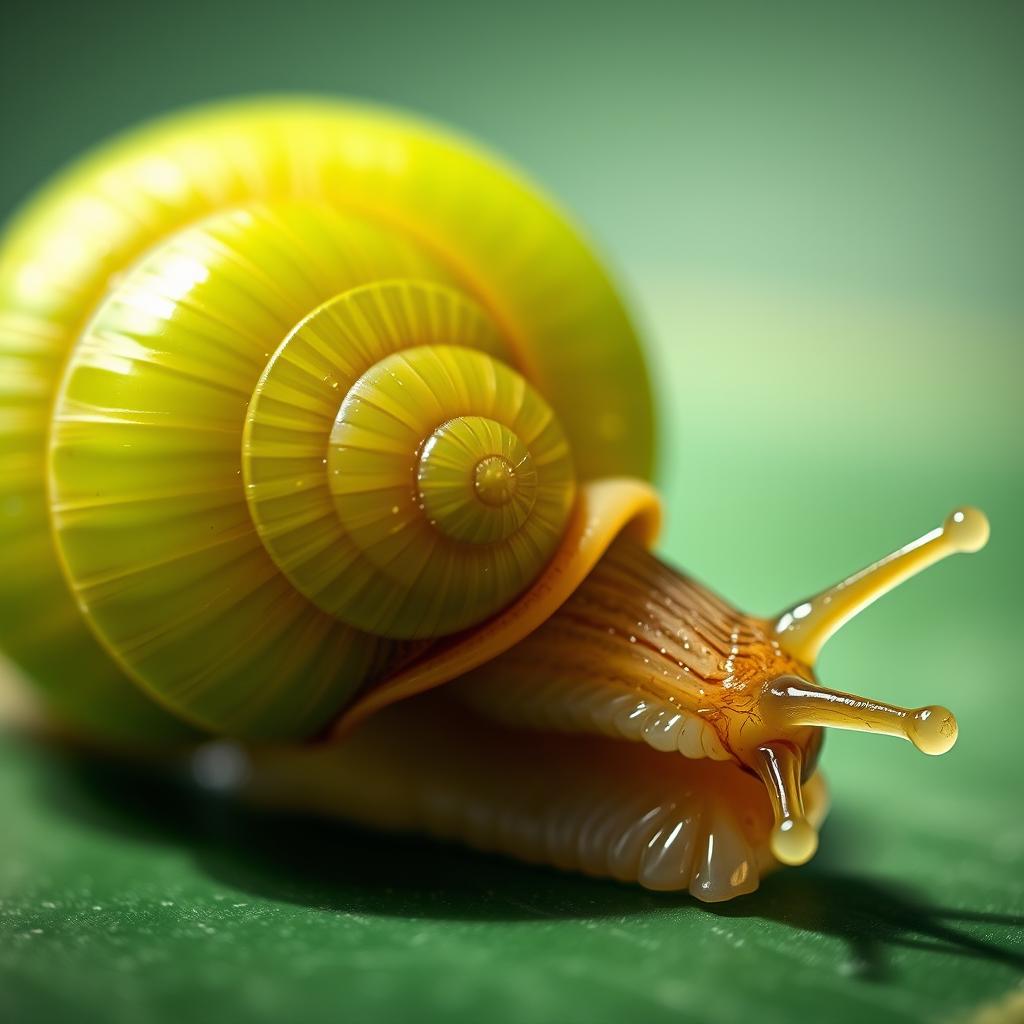
How Snail Filtrate Repairs Damaged Skin
Snail secretion filtrate has three main parts:
- Glycoproteins: help reduce redness and fix wounds
- Hyaluronic Acid: adds moisture to the skin
- Copper Peptides: help make collagen, smoothing out lines
Incorporating Snail Products into Your Routine
Begin with 1-2 uses a week. Apply it after you clean your face, before moisturizer. You can also mix it with your serum for more moisture. If you have oily skin, go for light gels. Dry skin? Choose richer creams. Always test it first.
Popular Brands Featuring Snail Extracts
Here are some top brands:
- COSRX: Advanced Snail Rip Cream (96% snail mucin)
- Mizon: Snail Repair Intensive Cream (for mature skin)
- Dr. Jart+: Cicapair Tiger Grass Snail Cream (for sensitive skin)
Look for the Leaping Bunny or PETA logo to ensure it’s cruelty-free. These brands focus on being kind to animals and the planet while giving you great results.
Collagen and Elastin: Building Blocks for Youthful Skin
As you get older, your skin loses collagen and elastin. This leads to wrinkles and sagging. Animal-derived ingredients in skincare help by adding back these important proteins. Marine collagen from fish and bovine collagen from cows are two common types. They add amino acids that improve hydration and firmness, making them essential for animal extracts in skincare.
There are three main types of collagen: Type I for structure, Type II for joints, and Type III for elasticity. Marine collagen, rich in Type I, is better at penetrating the skin than bovine collagen. Here’s how they compare:
| Type | Source | Key Benefit |
|---|---|---|
| Type I | Marine, bovine | Strengthens skin structure |
| Type II | Avian cartilage | Supports joint health |
| Type III | Porcine | Enhances skin elasticity |

Topical products with collagen peptides tell your skin to make its own proteins. Oral supplements can improve skin density over time. But, topical peptides like Matrixyl 3000 give faster results. Look for creams with marine collagen and hyaluronic acid for extra moisture.
“Peptide-based formulas are 5x more effective at boosting collagen than raw collagen extracts,” says Dr. Leslie Baumann, director of the University of Miami Skin Health program.
When buying products, choose those with animal-derived ingredients in skincare that list hydrolyzed collagen. Avoid powders with unclear sources. Go for brands like The Ordinary or Olaplex that clearly state their collagen sources. Making smart choices is key to keeping your skin healthy!
Squalane: Shark-Derived vs. Plant-Based Options
Choosing between shark-derived and plant-based squalane is about finding the right balance. Ethical use of animal-derived ingredients in skincare

The Original Marine Squalene Benefits
Shark-derived squalane was once a top choice for skincare because it closely matches human skin’s lipids. This made it a super-effective moisturizer. But, taking too much from sharks hurt their numbers a lot, leading to big changes in the industry.
Ethical Alternatives from Olive and Sugarcane
Now, science has found plant-based options that match squalane’s benefits. Olive and sugarcane offer cruelty-free animal-derived skincare that’s just as good:
| Source | Benefits | Sustainability |
|---|---|---|
| Shark Liver Oil | High absorption, non-greasy | Endangered species impact |
| Olive | Antioxidant-rich, eco-friendly | Renewable crop |
| Sugarcane | Lightweight texture | Carbon-neutral production |
How to Identify Sustainable Sources
Here’s what to look for when you shop:
- Certifications like Leaping Bunny or COSMOS Natural
- Ingredients lists that say “olive-derived” or “sugarcane-derived”
- Avoid vague terms like “natural” without third-party validation
Choosing plant-based squalane helps protect marine life and keeps your skin moisturized.
Milk-Based Ingredients: From Goat to Donkey
Milk has been a key player in natural skincare with animal ingredients for centuries. Goat, donkey, and camel milk bring special nutrients that hydrate and repair skin softly. These animal-friendly skincare formulations are gentle, making them great for sensitive skin.
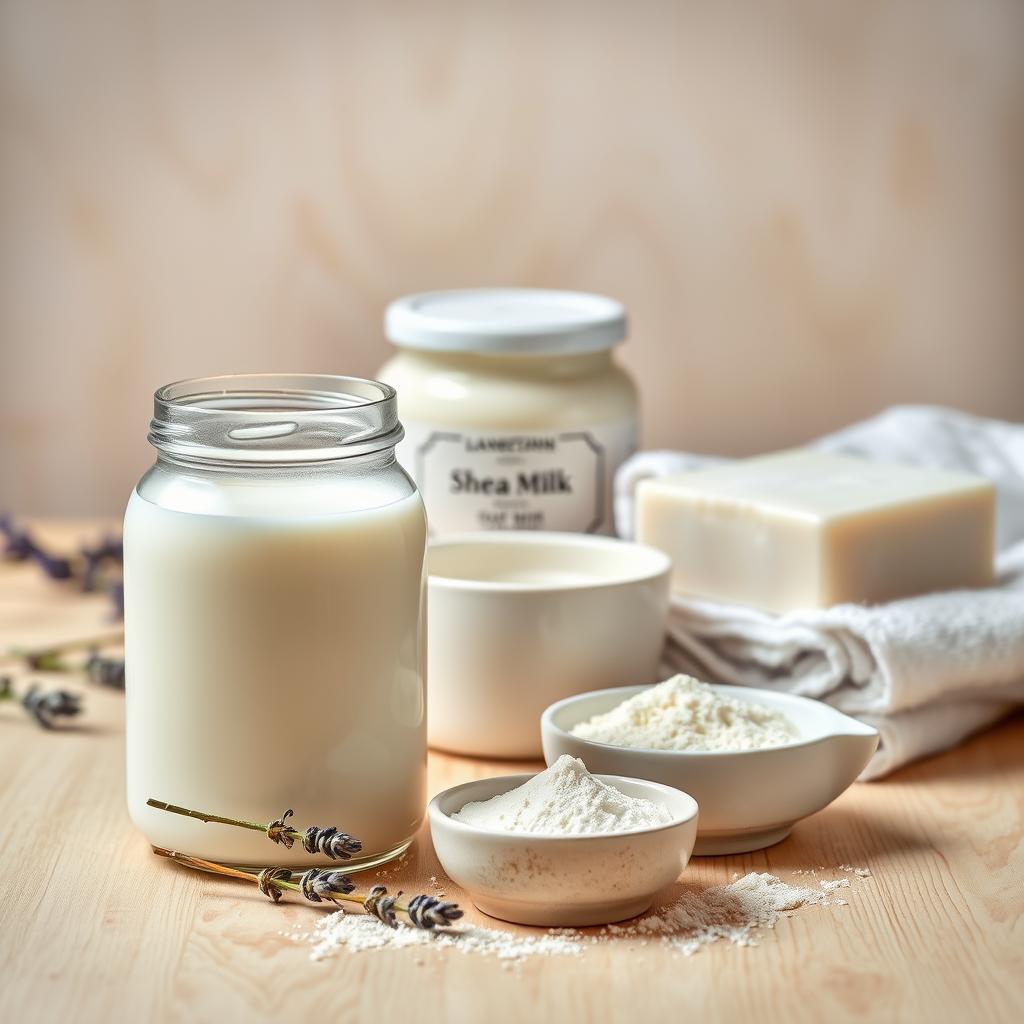
- Goat milk’s small fat molecules let vitamins A and B6 sink deep into your skin.
- Donkey milk, beloved by Cleopatra, packs proteins and vitamin D to calm redness.
- Camel milk’s vitamin C boosts collagen while fighting sun damage.
- Buffalo milk antioxidants neutralize free radicals, slowing aging.
Lactic acid in milk gently exfoliates without stripping moisture, ideal for eczema or rosacea. Look for products that list raw milk extracts, as heat processing can reduce benefits. Store products in cool, dark places to keep enzymes active. If your skin craves hydration, milks with casein proteins rebuild barriers, while their natural fats lock in moisture. Choose formulas that highlight raw sourcing and minimal processing for maximum impact.
Ethical Considerations When Choosing Animal-Derived Skincare
Choosing ethical use of animal-derived ingredients in skincare means knowing what to look for. Start by checking certifications like Leaping Bunny or PETA’s Beauty Without Bunnies. These logos don’t always guarantee perfection, though.

“True cruelty-free means no animal testing at any stage,” says the Leaping Bunny Program. But loopholes exist—some brands test abroad where laws allow animal testing.
Sustainable harvesting matters too. Brands like Tallow & Honey source lanolin from farms prioritizing sheep welfare. Look for terms like “ethically sourced” or “wild-harvested.”
- Check labels for specific terms: “beeswax” vs. vague “natural waxes”
- Watch for hidden animal derivatives: gelatin, carmine, or “animal by-products”
- Ask brands directly about supply chains—transparency builds trust.
Wildcrafted ingredients, even plant-based, can harm ecosystems. Opt for brands like Madara, which use regenerative farming. Sustainable practices protect both animals and your values.
Reading labels isn’t just about avoiding harm—it’s about supporting brands that align with your ethics. Look for “cruelty-free animal-derived skincare” verified by third parties. Your choices matter.
DIY Animal-Ingredient Masks and Treatments
Making your own natural skincare with animal ingredients at home is simple. These DIY recipes use powerful animal-derived compounds, saving you money on lab-made products. Start with basic ingredients from your kitchen or local market to make effective treatments.
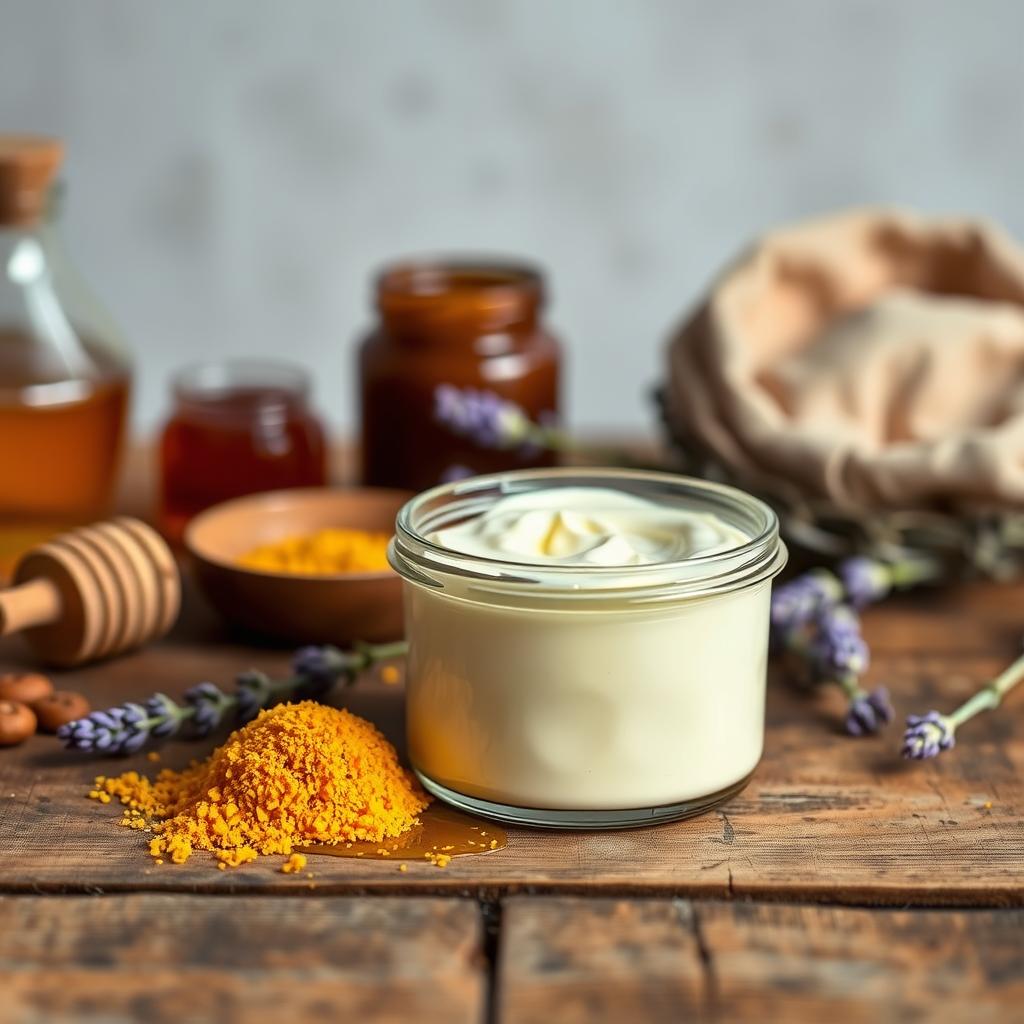
- Honey-Yogurt Glow Mask: Mix raw honey with plain Greek yogurt. Apply for 15 minutes to exfoliate and hydrate. Rinse gently for brighter skin.
- Lanolin Night Balm: Warm a teaspoon of purified lanolin, add 2 drops vitamin E oil. Apply nightly to seal moisture into severely dry skin—no synthetic preservatives needed.
- Egg White Lift Mask: Beat egg whites until frothy, apply to face. Let dry 10-15 minutes for a tightening effect. Rinse with lukewarm water for an instant firming boost.
- Royal Jelly Serum: Blend ½ tsp royal jelly with 1 tbsp jojoba oil. Store in a dark glass dropper bottle. Use 2-3 drops nightly as an anti-aging treatment.
“DIY formulations let you control ingredient quality, maximizing benefits from natural skincare with animal ingredients,” says Dr. Lisa Kim, dermatologist at NYC Dermatology Group.
Always patch test new mixes. Store perishables in the fridge up to 7 days. Adjust ratios for sensitive skin—dilute royal jelly with more carrier oil if irritation occurs. Opt for organic, ethically sourced animal products to align with cruelty-free practices. These recipes blend tradition with modern wellness, proving effective skin care with animal-derived ingredients can start right in your kitchen.
How to Incorporate Animal-Based Products into Your Existing Routine
Adding animal-derived ingredients to your skincare is easy. First, check your current routine for spots where animal-friendly skincare formulations can help. Start with one product at a time to avoid overwhelming your skin.
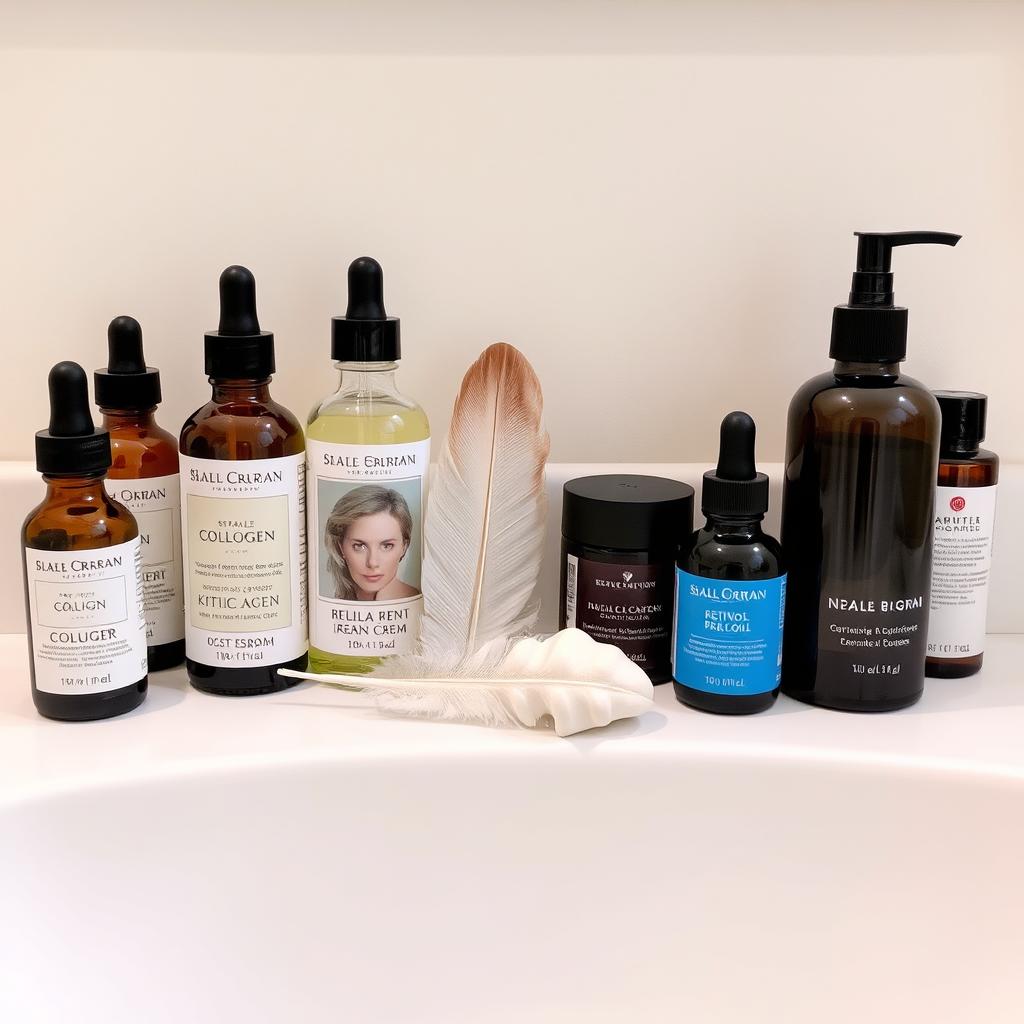
- Layer Smart: Apply lighter textures first. For example, use snail mucin serum before hyaluronic acid to let the mucin’s healing proteins penetrate first. Save thicker creams like lanolin for last to seal in moisture.
- Timing Matters: Morning: Layer raw honey gel under sunscreen for a non-greasy base. Evening: Swap to thicker options like donkey milk cream for overnight repair.
Pairing with Plants
Mix animal and plant-based products to enhance results. Try:
- Marine collagen serum + a vitamin C serum (like The Ordinary’s formula) for dual brightening and firming
- Propolis extract followed by a chamomile toner for sensitive skin calming
| Skin Type | Best Approach |
|---|---|
| Oily | Use light formulations like honey toners; avoid heavy creams |
| Sensitive | Start with diluted propolis serums; patch test first |
| Mature | Incorporate lanolin creams at night with retinol in the PM |
| Combination | Spot-treat dry areas with snail mucin while using oil-control products |
Troubleshooting tip: If plant-based oils pill with your lanolin cream, let each layer absorb fully before adding the next. In winter, swap light serums for richer milk-based creams.
Small adjustments like these ensure the incorporation of animal-derived ingredients for skin care enhances—not disrupts—your routine. Your skin will thank you for the balanced approach!
Conclusion: Embracing the Power of Nature’s Animal Ingredients
Animal-friendly skincare lets you use nature’s best for your skin. Ingredients like honey moisturize, while snail mucin repairs. These natural ingredients have been trusted for ages.
Choosing cruelty-free skincare is more than just good results. It’s about how these products are made. Look for brands that care about ethics and are open about their practices.
New ideas like lab-grown extracts and eco-friendly harvesting are changing the game. These steps help reduce harm to the planet while keeping ingredients strong. Your choice to buy ethically supports a future where skincare is kind and smart.
Check for certifications like Leaping Bunny to make sure no animals were tested. This ensures your products are made with care for the planet and animals.
Whether you’re using a milk mask or a collagen serum, you can do it without harming animals. Stay curious and informed to find products that are good for your skin and values. The right mix of nature and responsibility is possible, and your skin and values are worth it.
FAQ
What are the benefits of using animal-derived ingredients in skincare?
Ingredients like honey and lanolin have special benefits. They hydrate deeply and help repair the skin’s barrier. They also have antibacterial properties, making them great for many skin issues.
Are animal-based skincare products cruelty-free?
Many brands are now cruelty-free and ethically sourced. Look for the Leaping Bunny or PETA’s Beauty Without Bunnies logo. These logos mean the products are not tested on animals and are sourced responsibly.
How can I identify quality animal-derived skincare products?
Check the ingredient list for specific animal extracts. Make sure they come from trusted sources. Also, look for products with clear labeling about their ingredients and how they are sourced.
Are there any ethical concerns with using animal-derived ingredients in skincare?
Yes, there are ethical concerns. It’s important to choose brands that source ingredients sustainably and without cruelty. This way, you can enjoy the benefits without harming animals or the environment.
How do I incorporate animal-derived products into an existing skincare routine?
Start by adding them to your routine in the right places. For example, apply snail mucin after cleansing but before thicker creams. Adjust the use of these products based on your skin type and needs.
What types of animal-derived ingredients are commonly used in skincare?
Common ingredients include honey, lanolin, snail mucin, collagen, and squalane. Each offers unique benefits like hydration, anti-aging, or skin barrier support. They can enhance your skincare routine.
Can I find plant-based alternatives to animal-derived ingredients?
Yes, many brands offer plant-based alternatives. Ingredients like plant-derived squalane or hyaluronic acid can provide similar benefits without using animal products.
What should I consider when choosing animal extracts for skincare?
Consider the source and how the ingredients are extracted. Choose products that are sustainably and ethically sourced. This minimizes harm to the environment and animals. Always check the product labels for information on ethical standards.